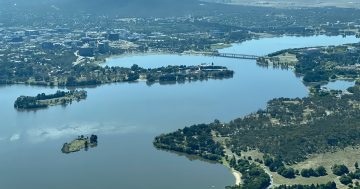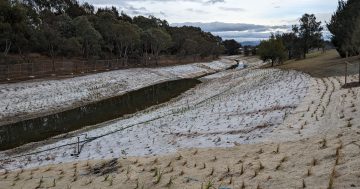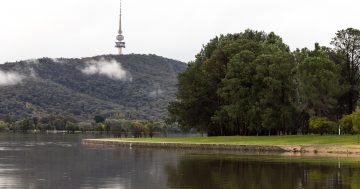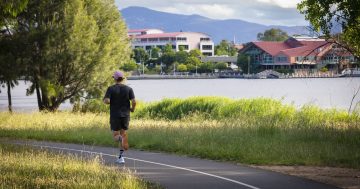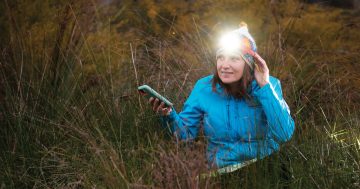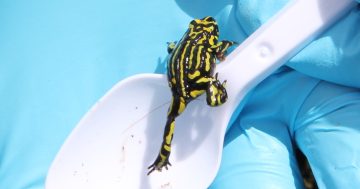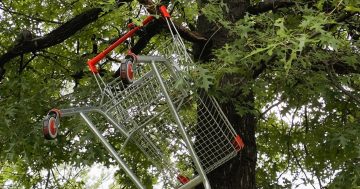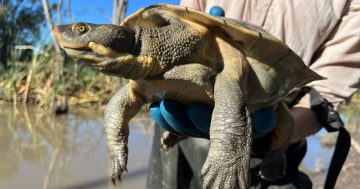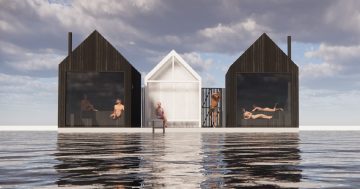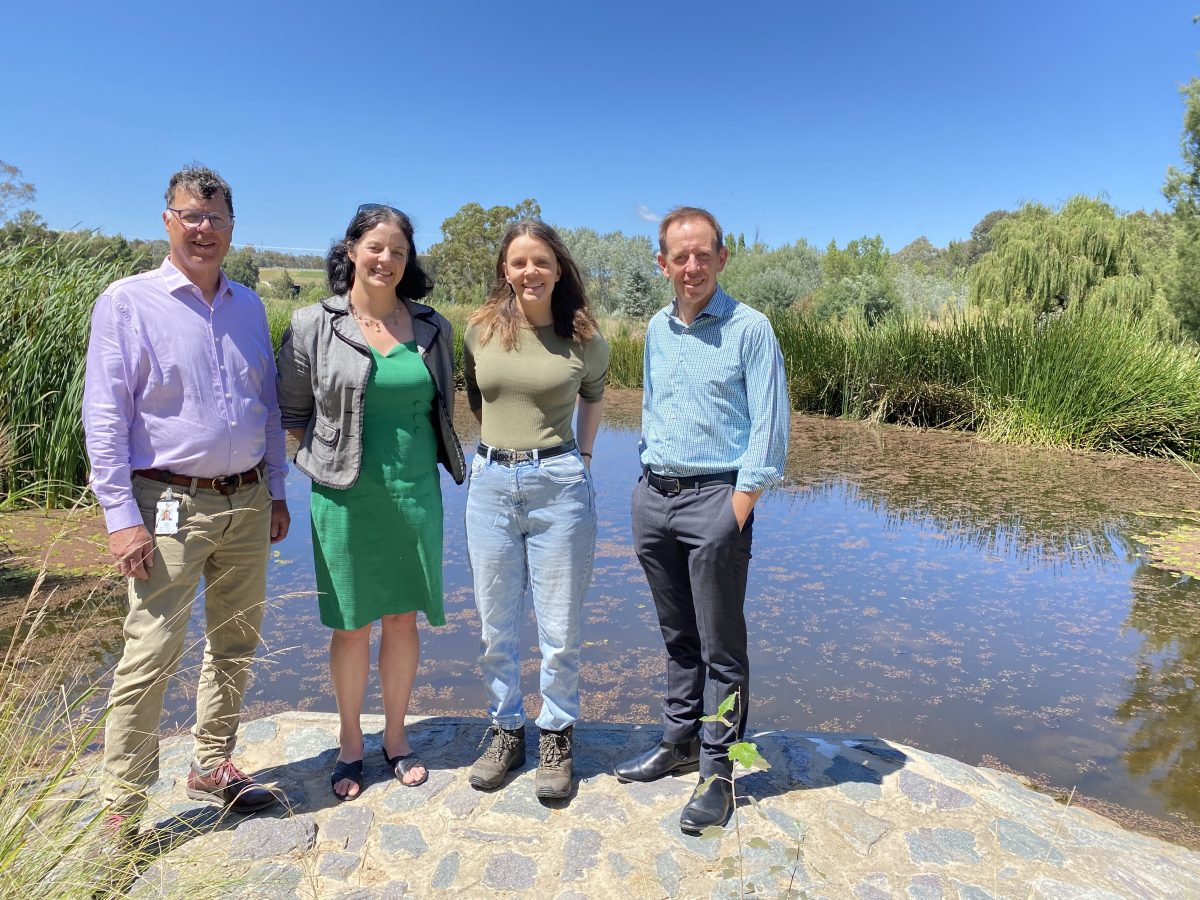
ACT Healthy Waterways Program Manager Ralph Ogden, Ginninderra MLA Jo Clay, Ginninderra Catchment Management coordinator Kat McGilp and Water Minister Shane Rattenbury enjoying the natural beauty at the Evatt Wetland. Photo: Claire Fenwicke.
Just a stone’s throw from Ginninderra Drive in Evatt, you can leave the traffic noises behind and listen to the ‘plonk plonk’ of frogs instead.
The Croke Place Wetlands are one of 22 that have been established in Canberra since 2017 to remove harmful pollutants from our waterways and create natural oases among the suburbs.
The five hectare area was converted from mowed exotic grassland to a wetland at a cost of $3.6 million in 2018-19 and treats the water before it runs into Lake Ginninderra.
Ginninderra Catchment Area coordinator Kat McGilp explained before the area’s transformation, it had been devoid of any significant native biodiversity.
“In the last few years, with the wetland habitat … we’re seeing heaps of water birds coming in, lots of herons, and a bunch of frog species that previously haven’t been seen on the site at all,” she said
“We’re actually finding a lot of frogs tend to prefer these wetland habitats over places like the creek.”
The wetland has also become a focal point for many Landcare and community groups in the area, with volunteers helping with weed control and revegetation, wildlife monitoring and school and community education.
The area is a series of natural filtration systems. A gross pollutant trap is at the start to catch solids like sticks, leaves and general rubbish before the water lands in a sedimentation pond. This stop allows muds and sands to settle, and then the water moves underground into a series of filtration ponds.
The ponds are filled with native plants and reeds which take up excess nutrients and has been designed to intercept, on average, 25 kg of phosphorus, 84 kg of nitrogen and 17 tons of suspended solids (sediments and organic matter) a year.
These pollutants would otherwise end up in Ginninderra Creek.
Water Minister Shane Rattenbury said the improvements to wetlands over the past six years had been part of a deliberate program, the Healthy Waterways Program, to improve the region’s water quality.
“Canberra’s lakes and stormwater system were built to rapidly move water out of the suburbs, filter it in the lakes, before it goes into the Murrumbidgee,” he said.
“Over time the expectations around our lakes have changed, people want to be able to swim in the lakes, walk their dogs, swim their dogs, and we’ve seen a real problem with the build-up of pollution.
“The lakes do their job perfectly, they trap the sediment, but that has led to the blue-green algae build-up and various other problems, and we’re trying to turn that around.”
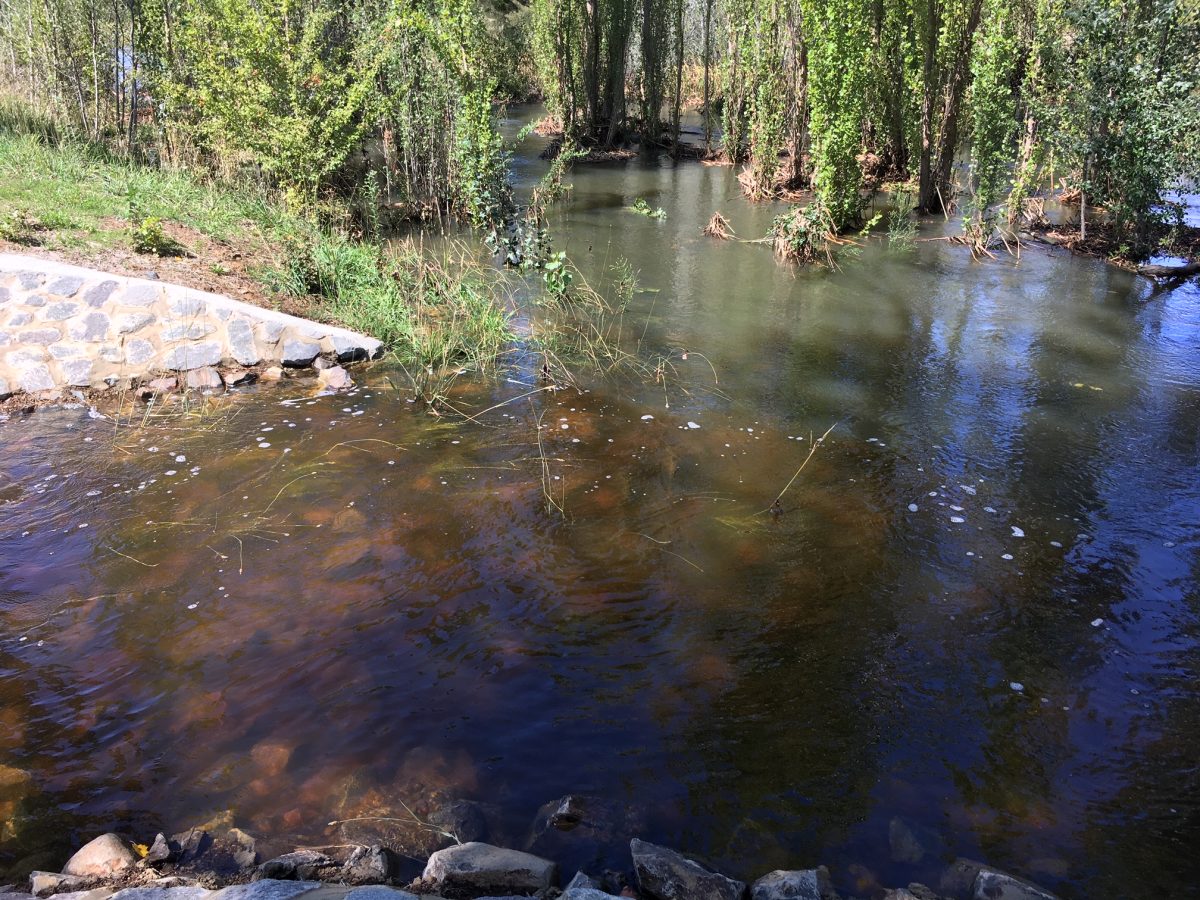
This photo shows the stark difference in water quality, with the left showing clear water from the Evatt wetland outflow, and the right grey water in Ginninderra Creek following a significant rain event. Photo: Daryl King.
Three more Healthy Waterways programs are currently underway, including building a wetland in Belconnen, restoring a section of Tuggeranong Creek and using water from a constructed stormwater pond to irrigate playing fields in Kambah.
Catchment management plans are also commencing this year.
Mr Rattenbury wouldn’t pre-empt any budget announcements, but said this was an area that would need ongoing investment.
In the Ginninderra area, local MLA Jo Clay said not only were the wetlands great for combating flood events, cooling the area in summer and filtering the water, but also bringing communities together.
“I think what a lot of us are finding, and many of us gained an appreciation of this during COVID … is we need nature, we’re part of nature, and it’s really important to have some places in our city to connect with,” she said.
The community has been reminded there are ways we can all help protect Canberra’s wetlands, be it by joining a local park care or catchment group, keeping our kerbside gutters clear of leaves and lawn clippings, or ensuring any fertilisers and detergents don’t run-off into stormwater drains.












